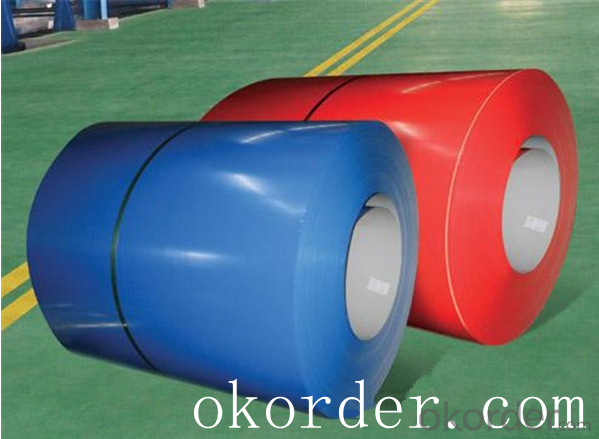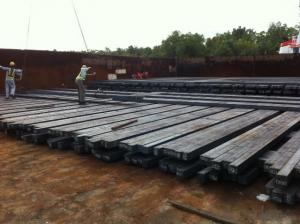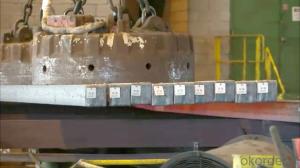Prime quality prepainted galvanized steel 740mm
- Loading Port:
- Tianjin
- Payment Terms:
- TT OR LC
- Min Order Qty:
- 100 m.t.
- Supply Capability:
- 10000 m.t./month
OKorder Service Pledge
OKorder Financial Service
You Might Also Like
Construction building material galvanized color prepainted cold
rolled steel coil
Prepainted steel sheet is coated with organic layer, which provides higher anti-corrosion property and
a longer lifespan than that of galvanized steel sheets.
The base metals for prepainted steel sheet consist of cold-rolled, HDG electro-galvanized and hot-dip
Alu-zinc coated. The finish coats of prepainted steel sheets can be classified into groups as follows:
polyester, silicon modified polyesters, polyvinylidene fluoride, high-durability polyester, etc

Standard and Grade :
Pre-paint galvanized steel coil | ||||
ASTM A755M-03 | EN10169:2006 | JISG 3312-2012 | ||
Commercial quality | CS | DX51D+Z | CGCC | |
Structure steel | SS GRADE 230 | S220GD+Z | CGC340 | |
SS GRADE 255 | S250GD+Z | CGC400 | ||
SS GRADE 275 | S280GD+Z | CGC440 | ||
SS GRADE 340 | S320GD+Z | CGC490 | ||
SS GRADE550 | S350GD+Z | CGC570 | ||
S550GD+Z | ||||
Application:
Outdoor | Roof, roof structure, surface sheet of balcony, frame of window, door of garage, rolled shutter door, booth, Persian blinds, cabana, etc |
Indoor | Door, isolater, frame of door, light steel structure of house, home electronic appliances, ect. |
Specifications
Commodity Name: Prepainted Galvanized Steel Coil
Standard: AISI, ASTM, DIN, GB, JIS
Grade: TDC52D+Z
Thickness 0.13-8.0mm
Width:600mm-1350mm
Zinc Coating:275g/m2
Polyester Coating Thickness:Top and Back coating thickness depend by Buyer Requirement.
Polyester Coating Type:2/2,1/2m,1/2.
Polyester Type: Polyester, silicone modified polyester, high durability polyester (HDP), polyvinylidene fluoride (PVDF)
Unit Roll Weight:5-20tons
Place of Origin Shanghai , China (Mainland)
Surface Treatment :Color Coated
Manufacture Progress:HRC-CRC-GALVANIZED-COLOR COATED
Application : Construction, electrical, transportation, steel plant, composite board plant, steel tile factory
Payment & Shipping Terms:T/T ,L/C, and FOB CHINA
Minimum Order Quantity: 25Tons
Packge Type: Moisture-proof paper inner,Steel outside,Bundle by steel rope.
Package in Container : Wood as a foot pad, wire rope reinforcement,PPGI steel coil tied together by steel rope.
- Q:Can steel billets be painted or coated for decorative purposes?
- Yes, steel billets can be painted or coated for decorative purposes. The surface of steel billets can be prepared and treated to ensure proper adhesion of paint or coating, allowing for customization and enhancing their appearance for decorative applications.
- Q:What are the different surface defects that can occur during steel billet production?
- During steel billet production, several surface defects can occur, compromising the quality and performance of the final product. Some of the common surface defects include: 1. Scale: Scale is a layer of oxide that forms on the surface of the billet due to exposure to high temperatures during heating or rolling. It can reduce the surface quality and cause issues during subsequent processing stages. 2. Cracks: Cracks can form on the surface of the billet due to improper cooling or excessive stress during rolling. These cracks can propagate and lead to further structural weaknesses, affecting the integrity of the final product. 3. Pitting: Pitting refers to the formation of small cavities or depressions on the surface of the billet. It can occur due to reactions with chemicals or exposure to corrosive environments during production or storage. 4. Decarburization: Decarburization is the loss of carbon from the surface of the billet, leaving it with a lower carbon content. This can happen during heating or due to prolonged exposure to high temperatures, affecting the mechanical properties of the steel. 5. Lamination: Lamination defects occur when layers or sheets of material separate within the billet, leading to weak spots in the structure. This defect can be caused by improper casting, cooling, or rolling processes. 6. Inclusions: Inclusions are non-metallic particles or impurities that get trapped within the steel matrix during production. These can include oxides, sulfides, or other foreign materials, which can weaken the steel and reduce its overall properties. 7. Slivers: Slivers are thin strips or elongated pieces of steel that can detach from the billet's surface during rolling. These can cause surface roughness and affect the dimensional accuracy of the final product. 8. Seam: A seam defect occurs when the molten steel does not properly bond during the casting process, resulting in a visible line or seam on the surface of the billet. This defect can weaken the steel and compromise its structural integrity. To ensure high-quality steel billets, manufacturers employ various techniques such as proper control of heating and cooling processes, regular inspection and monitoring, and the use of advanced technologies to detect and eliminate these surface defects.
- Q:How are steel billets used in the production of shipbuilding components?
- Steel billets serve as the primary raw material in shipbuilding, as they are essential for the production of shipbuilding components. These components require a high level of strength, durability, and corrosion resistance, all of which can be achieved through the use of steel billets. To produce various shapes and sizes of steel plates, beams, and bars, steel billets are first heated and then passed through a series of rolling processes. These components play a crucial role in the construction of the ship's hull, superstructure, and other structural components. For instance, steel plates are utilized to form the ship's outer shell, while beams and bars provide support and stability. In addition, steel billets can be forged or machined to create specialized shipbuilding components like propeller shafts, rudder stocks, and engine mounts. These components are vital for the ship's propulsion system, steering mechanism, and overall functionality. Moreover, steel billets can be used to manufacture pipes and tubes, which are crucial for the ship's plumbing, ventilation, and fuel systems. The use of steel billets in shipbuilding ensures that the vessels are built to withstand the harsh marine environment, including extreme weather conditions and corrosive seawater. Steel's high strength-to-weight ratio makes it an ideal choice for constructing large and sturdy ships. Additionally, steel's weldability allows for efficient assembly and fabrication processes during ship construction. In summary, steel billets are a fundamental component in shipbuilding, providing the necessary strength, durability, and corrosion resistance required for the construction of various ship components. From the hull and superstructure to specialized parts, steel billets are indispensable in the production of shipbuilding components.
- Q:How are steel billets used in the construction of bridges?
- Due to their exceptional strength and durability, steel billets play a crucial role in bridge construction. These cylindrical pieces of raw steel are heated and shaped into various structural components, such as beams, columns, and girders, which serve as the foundation of bridge structures. The initial step in utilizing steel billets for bridge construction involves heating them in a furnace to make them malleable. Once the desired temperature is reached, the billets are passed through a series of rollers to shape them into the required sections. This process, referred to as hot rolling, guarantees that the steel achieves the necessary strength and structural integrity. Following this, the shaped steel billets undergo further processing and fabrication to form different bridge components. For example, beams are created by cutting and welding steel billets together to form long, horizontal members that bear the weight of the bridge deck. These beams are designed to withstand heavy loads and provide stability to the entire structure. On the other hand, columns are vertical members that transfer the load from the bridge deck to the foundations. Steel billets are shaped and joined together to construct these load-bearing columns, ensuring they possess the required strength to endure compression forces. Girders also play a vital role in bridge construction, serving as horizontal supports that span across the width of the bridge. Steel billets are shaped into girders, which are then fabricated and connected to the bridge's piers or abutments. These girders provide the necessary strength to evenly distribute the weight of the bridge deck. Aside from their strength, steel billets offer several advantages in bridge construction. They possess a high resistance to corrosion, guaranteeing the durability and longevity of the bridge structure. Additionally, steel billets are highly versatile, allowing engineers to create various shapes and sizes, enabling the design of bridges that meet specific project requirements. Overall, steel billets are extensively utilized in bridge construction due to their strength, durability, and versatility. They form the foundation of bridge structures, providing the necessary support and stability to ensure the safe and efficient transportation of people and goods.
- Q:What is the role of steel billets in the manufacturing of cutting tools?
- Steel billets play a crucial role in the manufacturing of cutting tools as they are the starting material for producing high-quality tool steels. These billets are heated, forged, and machined to form the desired shape and size of cutting tools such as drills, saw blades, and milling cutters. The strength and durability of the cutting tools largely depend on the quality and composition of the steel billets used.
- Q:Can steel billets be used in the manufacturing of machinery?
- Yes, steel billets can be used in the manufacturing of machinery. Steel billets are semi-finished products that can be further processed into various shapes and sizes for different applications. In machinery manufacturing, steel billets are often used as raw materials to produce components such as gears, shafts, and structural frames. The high strength and durability of steel make it an ideal choice for machinery that requires robust construction and reliable performance.
- Q:How are steel billets reheated before rolling or forging?
- Steel billets are reheated before rolling or forging through a process known as billet heating. This process involves subjecting the billets to high temperatures to make them more malleable and easier to shape. There are several methods commonly used for billet heating, including: 1. Furnaces: The most common method of reheating steel billets is through the use of furnaces. These furnaces are typically gas-fired and can reach temperatures of up to 1,200 degrees Celsius. The billets are loaded into the furnace and heated for a specific period of time to achieve the desired temperature. The furnace provides a controlled environment, allowing for even heating and uniformity. 2. Induction heating: Another method used for reheating steel billets is induction heating. This process utilizes electromagnetic induction to heat the billets. An alternating current is passed through a copper coil, creating a magnetic field. The billets are then placed inside the coil, and the magnetic field induces eddy currents within the billets, generating heat. Induction heating offers precise temperature control and rapid heating rates, making it suitable for high-speed production. 3. Electric resistance heating: Electric resistance heating is another technique employed for reheating steel billets. This method involves passing an electric current through the billets, causing them to heat up due to the resistance encountered. Electric resistance heating can be achieved using various types of heating elements, such as graphite electrodes or resistance heating wires. This method offers precise temperature control and is commonly used for smaller-scale operations. Regardless of the heating method used, it is essential to carefully control the temperature and heating time to ensure the billets reach the optimal temperature for rolling or forging. The reheating process allows the steel to become more pliable, reducing its hardness and increasing its ductility, making it easier to shape and form into the desired end product.
- Q:What are the different types of forging processes used for shaping steel billets?
- There are several types of forging processes used for shaping steel billets. Some common ones include open-die forging, closed-die forging, impression-die forging, and seamless rolled ring forging. Each process has its unique characteristics and is suitable for specific applications.
- Q:What is the role of steel billets in the manufacturing of conveyor systems?
- Steel billets play a crucial role in the manufacturing of conveyor systems as they serve as the raw material for producing various components like rollers, frames, and support structures. These billets are heated, shaped, and machined to create the desired conveyor parts, ensuring strength, durability, and stability for the system.
- Q:What are the different types of steel billet quality control tests?
- To ensure the integrity and suitability of steel billets for further processing, various types of quality control tests are conducted. These tests play a vital role in maintaining the desired quality standards in the steel industry and detecting any defects or inconsistencies in the billets. Some commonly used tests for steel billet quality control are as follows: 1. Visual Inspection: This test involves visually examining the billets to identify surface defects like cracks, seams, or dents. It is a fundamental form of quality control and can be carried out quickly. 2. Dimensional Inspection: In this test, the dimensions of the billets are measured and compared to specified tolerances. This ensures that the billets fall within the required size range and meet the dimensional requirements for further processing. 3. Chemical Composition Analysis: This test involves analyzing the chemical composition of the steel billets to ensure they meet the specified requirements. It includes determining the percentages of different elements such as carbon, manganese, sulfur, and phosphorus. 4. Mechanical Testing: This test evaluates the mechanical properties of the steel billets, such as tensile strength, yield strength, and elongation. These properties are crucial in determining the billets' suitability for specific applications. 5. Ultrasonic Testing: This non-destructive testing method utilizes ultrasonic waves to detect internal defects like cracks or voids in the billets. It is particularly effective in identifying hidden defects that may not be visible during visual inspection. 6. Magnetic Particle Inspection: This test involves applying a magnetic field to the billets and then introducing magnetic particles to the surface. Any surface or near-surface defects will cause the particles to gather, indicating the presence of a defect. 7. Eddy Current Testing: This method uses electromagnetic induction to detect surface defects or variations in the billets' electrical conductivity. It is useful in identifying cracks, voids, or inconsistencies in the billets' microstructure. 8. Microstructure Analysis: This test involves examining the microstructure of the steel billets under a microscope to assess homogeneity, grain size, and the presence of any undesirable phases. It aids in determining the overall quality and suitability of the billets for further processing. These tests, alongside other specific tests, are an integral part of steel billet quality control. By conducting these tests, manufacturers can ensure that the billets meet the required standards and possess the necessary properties for their intended applications.
1. Manufacturer Overview |
|
|---|---|
| Location | |
| Year Established | |
| Annual Output Value | |
| Main Markets | |
| Company Certifications | |
2. Manufacturer Certificates |
|
|---|---|
| a) Certification Name | |
| Range | |
| Reference | |
| Validity Period | |
3. Manufacturer Capability |
|
|---|---|
| a)Trade Capacity | |
| Nearest Port | |
| Export Percentage | |
| No.of Employees in Trade Department | |
| Language Spoken: | |
| b)Factory Information | |
| Factory Size: | |
| No. of Production Lines | |
| Contract Manufacturing | |
| Product Price Range | |
Send your message to us
Prime quality prepainted galvanized steel 740mm
- Loading Port:
- Tianjin
- Payment Terms:
- TT OR LC
- Min Order Qty:
- 100 m.t.
- Supply Capability:
- 10000 m.t./month
OKorder Service Pledge
OKorder Financial Service
Similar products
New products
Hot products
Related keywords
































